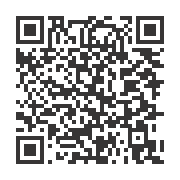

Geena pushed a grocery cart down the cereal aisle with her four-year-old son, Marc, on board. It wasn’t long before he spotted his favorite cartoon character on the brightly-colored boxes. Marc pointed at the boxes and whined, “I want that, mama!” over and over again. “Not this time, honey,” Geena said. Marc started to cry full-force, but Geena rolled along, ignoring stares from the other shoppers.
Chances are that this has happened to you — at least once. Advertising that is designed to make children want certain products is very effective and it’s everywhere. It’s on TV, at the movies, in games, on food packages and much more.
A study published in 2010 in the journal Pediatrics found that four to six-year-old children preferred the taste of snacks in packages that pictured cartoon characters.
Unfortunately, food companies use characters to promote less nutritious foods more often than they use characters to promote healthy ones. In 2011, a study of children’s programs on the most popular channels found that 73% of food ads aimed at children used a familiar character, and that 72% of these ads promoted foods of low nutritional quality.
The good news is that parents have the power to override the influence of food advertising. Parents can make the right choices for their children.
Once in a while, it’s OK for children to eat less nutritious foods like chips, cookies, pie and cake. In fact, parents should be sure to include these foods occasionally as a part of meals and snacks — along with a variety of other foods. This teaches children that all foods are OK, which helps them grow up to have a healthy relationship with food and eating.
Here are a few tips to help parents include less nutritious foods in moderation (adapted from Secrets of Feeding a Healthy Family, Ellyn Satter, 2008):
No one can escape food advertising — it’s everywhere. But parents have the final say about which foods to offer their children. When parents provide a variety of foods — including less nutritious foods once in a while — children are more likely to be better eaters and get the nutrients they need for growth and health. ![]()
Install this web app on your iPhone: tap ![]() and then Add to Home Screen.
and then Add to Home Screen.
Side-Lying Hold
This hold is useful when:
Cross-Cradle Hold
This hold is useful when:
Clutch or “Football” Hold
This hold is useful when:
Cradle Hold
This hold is useful when:
Laid-Back Hold
This hold is useful when: